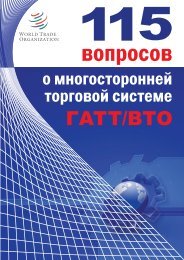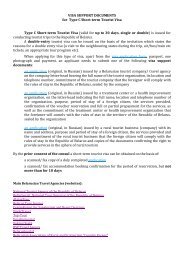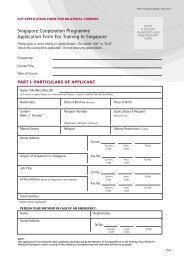Human Development Report 2013 - UNDP
Human Development Report 2013 - UNDP
Human Development Report 2013 - UNDP
Create successful ePaper yourself
Turn your PDF publications into a flip-book with our unique Google optimized e-Paper software.
FIGURE 2.4Export earnings per capita and human development are highly correlatedLog of exports per capita, 2008–2010121110987654375TH PERCENTILEMEDIANMaltaHungary0.2 0.4 0.6 0.8 1.0Countries with relatively low labour force participationrates for women (less than 45% in 2009–2010)Note: Bubble size is proportional to the share of the nonprimary sector in output.Source: HDRO calculations and World Bank (2012a).MalaysiaItalyNonincome HDI, 2005OthersSouth Asia in the African commodity sectorshow fewer enclave characteristics. And manygovernments in the South are being morepragmatic. While adopting sound macroeconomicpolicies, strengthening institutionsand becoming more open, they are activelyengaging in industrial policy and promotingentrepreneurship, education, skill formationand technology upgrading. While supportingindustrial clusters and economic zones andexpanding regional trade and investment, theyare also creating finance and credit facilitiesfor small and medium-size enterprises. Soundmacroeconomic policy helps manage the risksof large foreign exchange inflows, while smartindustrial policy strenghtens domestic linksand enhances market multipliers.Many countries have also benefited fromtechnology transfer and FDI into sectors thatcontribute to human development. Indianfirms, for example, are supplying affordablemedicines, medical equipment, and informationand communications technology productsand services to countries in Africa. Brazilianand South African companies are doing thesame in their regional markets. Asian FDI inAfrica has also expanded utility and telecommunicationsinfrastructure.Rising competitive pressuresNevertheless, exports from larger countries canalso have disadvantages. Large countries generatecompetitive pressures in smaller countriesthat can stifle economic diversification andindustrialization. Examples span the electricalindustry in Zambia, clothing in Kenya andSenegal and textiles in South Africa. 45 Clothingexports from Africa would struggle to retaintheir trade share in major markets without thetrade preferences and liberal rules of originavailable through the US African Growth andOpportunity Act and the EU Everything ButArms initiative. 46Even larger countries are not immune fromcompetitive pressures. Chinese exports affectBrazilian manufacturing through imports ofcheaper manufactures and indirectly throughcompetition in third markets. 47 As an indirectresponse, in September 2011, Brazil formallysubmitted a proposal to the World TradeOrganization to examine trade remedies forredressing currency fluctuations that lead toimport surges. 48 India has long sought reciprocalmarket access for its automobiles inChina.To check the adverse consequence of risingexports on some of its partners, China isproviding preferential loans and setting uptraining programmes to modernize the garmentand textile sectors in African countries. 49China has encouraged its mature industriessuch as leather to move closer to the supplychain in Africa and its modern firms in telecommunications,pharmaceuticals, electronicsand construction to enter joint ventures withAfrican businesses. 50Moreover, there are instances where competitivejolts have been followed by industrialrevival. Ethiopia’s footwear industry, forexample, was initially displaced by cheap EastAsian imports, resulting in large-scale layoffs52 | HUMAN DEVELOPMENT REPORT <strong>2013</strong>
















